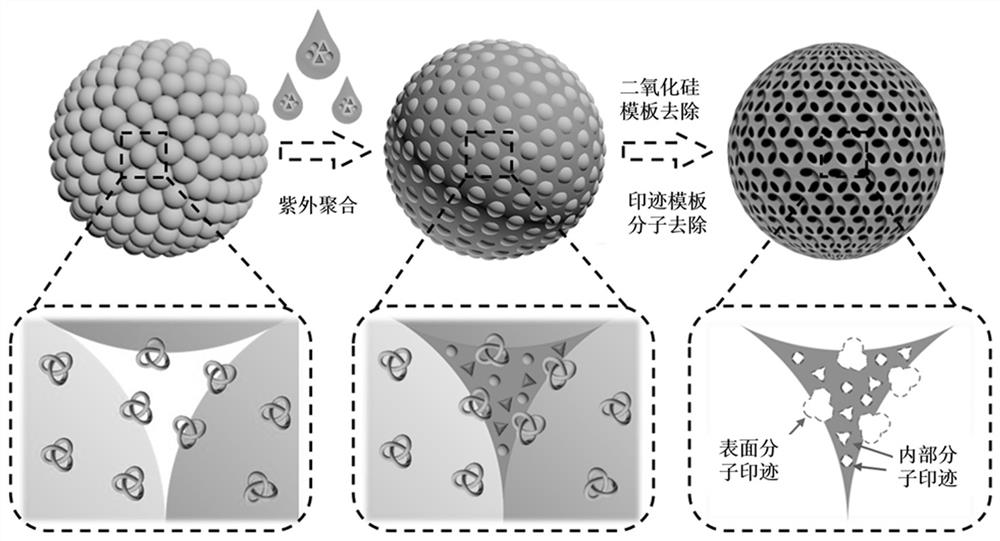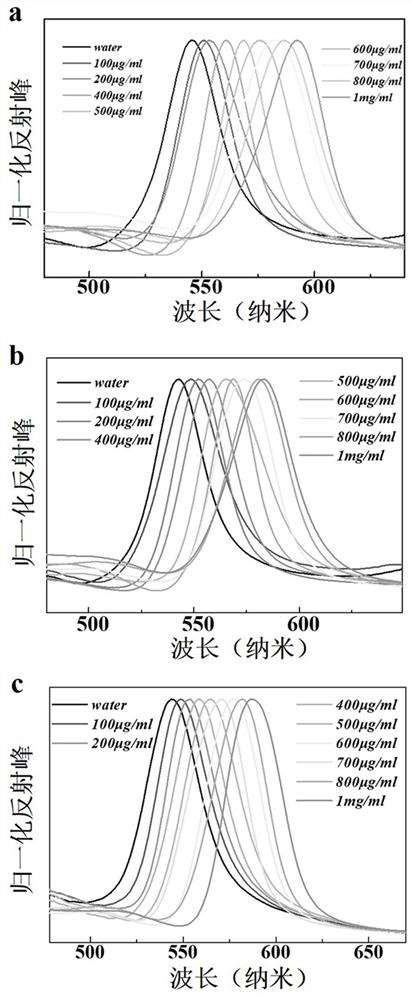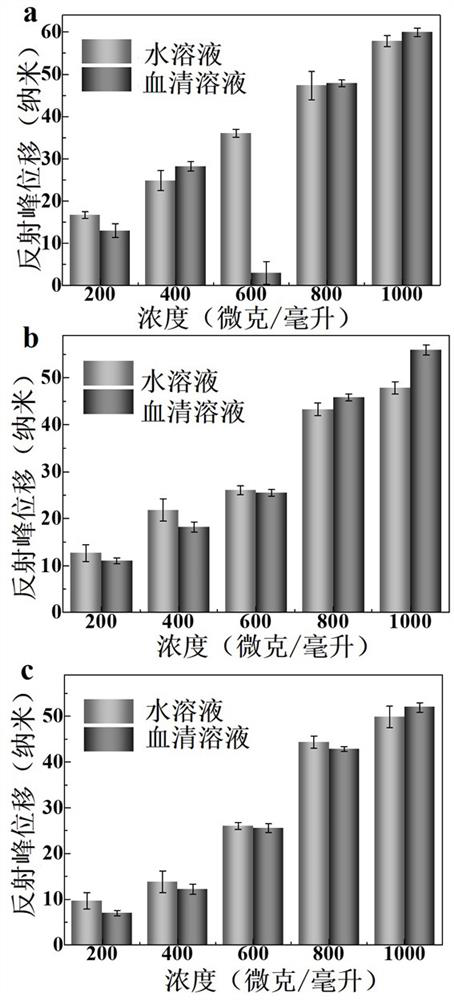Inverse opal structure microsphere with multiple molecular imprinting and preparation method and application thereof
An anti-opal structure and molecular imprinting technology, applied in ion exchange, ion exchange regeneration, ion exchange treatment devices, etc., can solve the problems of poor specificity of adsorbent, poor specific adsorption, and low adsorption efficiency, and achieve low cost and easy Simple effect of control and process
- Summary
- Abstract
- Description
- Claims
- Application Information
AI Technical Summary
Problems solved by technology
Method used
Image
Examples
Embodiment 1
[0027] An inverse opal microsphere with multiple molecular imprints, prepared by the following method:
[0028] Step S1, using silica nanoparticles to self-assemble into a silica photonic crystal sphere template;
[0029] Step S2, grafting surface imprinted molecules on the surface of the silica photonic crystal ball template by electrostatic adsorption to form surface molecular imprints;
[0030] Step S3, dissolving the internally imprinted molecule and the photoinitiator in the hydrogel prepolymerization solution, and then infiltrating the hydrogel prepolymerization solution containing the internally imprinted molecule and the photoinitiator into the silica photonic crystal sphere template, and curing by ultraviolet light Form a photonic crystal-hydrogel microsphere hybrid; wherein, the bioimprinting molecules include surface imprinting molecules and internal imprinting molecules to form their own spatial structures in the cured hydrogel; the surface imprinting molecules are...
Embodiment 2
[0033] An inverse opal microsphere with multiple molecular imprints, prepared by the following method:
[0034] Step S1, using silica nanoparticles with a particle size of 250nm to prepare SiO by droplet self-assembly method 2 Photonic crystal ball template;
[0035] Step S2. According to electrostatic adsorption, positively charged lysozyme molecules are grafted on the negatively charged SiO2 as surface imprinted molecules. 2 The surface of the photonic crystal ball template forms surface molecular imprints;
[0036] Step S3, urea and creatinine are dissolved in the hydrogel prepolymerization solution as internal imprinted molecules and photoinitiator, the mixing ratio is 20% (v / v) gelatin methacrylate (GelMA), 20% (v / v) Polyethylene glycol diacrylate (PEGDA), 5% (w / v) urea, 5% (w / v) creatinine, and 1% (v / v) photoinitiator, prepolymerized the above mixed hydrogel The solution penetrates into the SiO 2 In the photonic crystal ball template, after soaking for 4 hours, it is...
Embodiment 3
[0038] Example 3: Inverse Opal Structured Microspheres with Multiple Molecular Imprints for Adsorption and Clearance of Blood Molecules
[0039] Taking the inverse opal microspheres with multiple molecular imprints of Example 2 as an example to verify the specific adsorption of target biomolecules in blood, the steps are as follows:
[0040] (1) Solution preparation:
[0041]Prepare aqueous solutions of urea, creatinine and lysozyme with concentrations of 1 mg / ml, 800 μg / ml, 600 μg / ml, 400 μg / ml, 200 μg / ml, and 100 μg / ml respectively, wherein the concentrations of the three target molecules in the aqueous solution of each concentration refer to Replace the concentration of urea, creatinine and lysozyme, such as the concentration of urea, creatinine and lysozyme in the aqueous solution of 1mg / ml urea, creatinine and lysozyme is 1mg / ml;
[0042] Prepare fetal bovine serum solutions of urea, creatinine, and lysozyme at concentrations of 1 mg / ml, 800 μg / ml, 600 μg / ml, 400 μg / ml, ...
PUM
 Login to View More
Login to View More Abstract
Description
Claims
Application Information
 Login to View More
Login to View More - R&D
- Intellectual Property
- Life Sciences
- Materials
- Tech Scout
- Unparalleled Data Quality
- Higher Quality Content
- 60% Fewer Hallucinations
Browse by: Latest US Patents, China's latest patents, Technical Efficacy Thesaurus, Application Domain, Technology Topic, Popular Technical Reports.
© 2025 PatSnap. All rights reserved.Legal|Privacy policy|Modern Slavery Act Transparency Statement|Sitemap|About US| Contact US: help@patsnap.com



